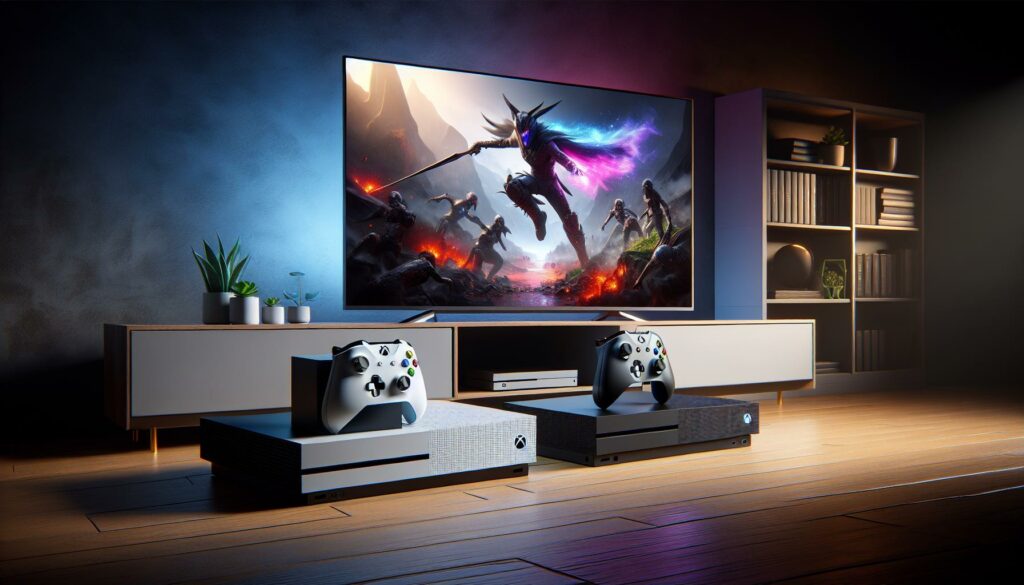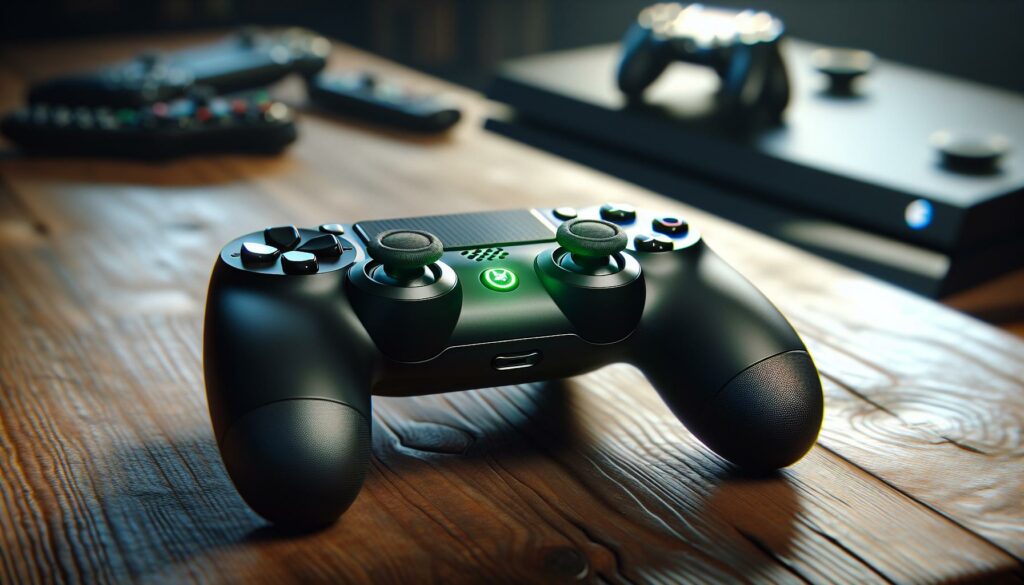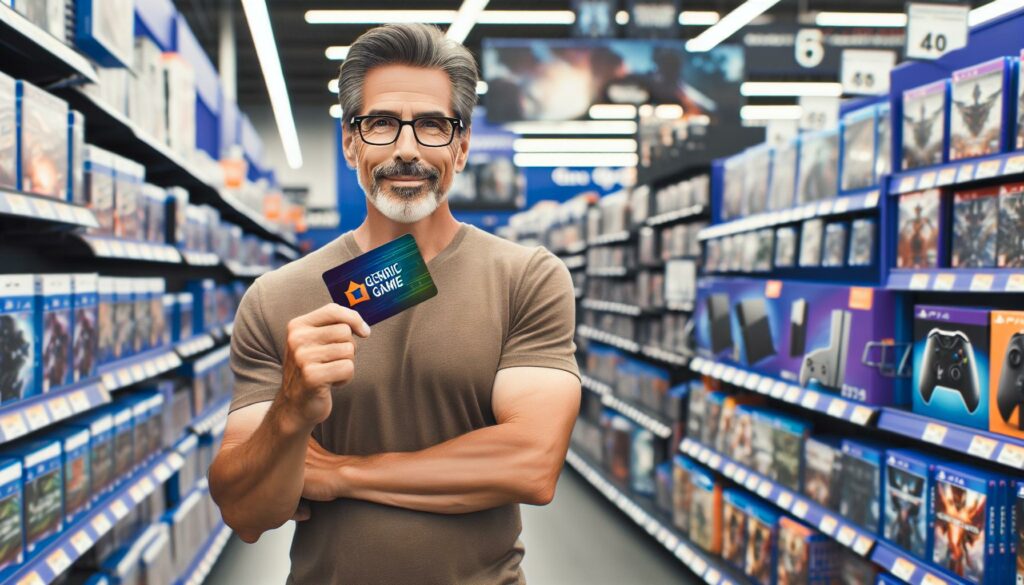As a gaming enthusiast, I’ve spent countless hours exploring the nuances between different Xbox consoles. The Xbox One and Xbox One S represent two significant milestones in Microsoft’s gaming evolution and I know choosing between them can be challenging. I’ve noticed many gamers struggle to understand the key differences between these two consoles. While they might look similar at first glance the Xbox One S introduced several improvements over its predecessor. From enhanced graphics capabilities and HDR support to a more compact design the Xbox One S brought meaningful upgrades to Microsoft’s gaming ecosystem. In this guide I’ll break down the essential differences between these consoles to help you make an informed decision.
- The Xbox One S is 40% smaller than the original Xbox One and features an internal power supply, making it more space-efficient and aesthetically pleasing.
- The Xbox One S supports 4K resolution and HDR gaming, offering superior visual quality compared to the original Xbox One’s 1080p output.
- Both consoles share the same core hardware (1.75 GHz AMD 8-core CPU, 8GB DDR3 RAM), but the Xbox One S processes graphics more efficiently.
- The Xbox One S introduced crucial upgrades including 4K Blu-ray playback, HDMI 2.0a output, and enhanced storage options up to 2TB.
- While the Xbox One S launched at $299 (500GB model), it offers better value with advanced features like 4K capabilities and HDR support compared to the original’s $249 price point.
Xbox 1 vs Xbox 1s
The Xbox One S introduces significant design improvements over its predecessor, featuring a streamlined form factor and modern aesthetic appeal. Let’s examine the specific physical differences between these two gaming consoles.
Size and Form Factor
The Xbox One S reduces the original Xbox One’s footprint by 40%, measuring 11.6 x 8.9 x 2.5 inches compared to the original’s 13.1 x 10.8 x 3.1 inches. I’ve noted the console’s internal power supply eliminates the bulky external power brick found on the original Xbox One. The sleeker design allows the Xbox One S to fit comfortably in smaller entertainment spaces while maintaining proper ventilation through strategically placed cooling vents.
- Precision-engineered matte texture replaces the glossy-matte mix of the original
- Dotted ventilation pattern creates a modern geometric aesthetic
- IR blaster integration maintains a clean front panel design
- Physical power button replaces the original’s capacitive touch sensor
- Vertical orientation support with an optional stand attachment
| Design Feature | Xbox One | Xbox One S |
|---|---|---|
| Dimensions (inches) | 13.1 x 10.8 x 3.1 | 11.6 x 8.9 x 2.5 |
| Volume Reduction | Base model | 40% smaller |
| Power Supply | External brick | Internal |
| Primary Color | Liquid Black | Robot White |
| Orientation Options | Horizontal only | Horizontal & Vertical |
Performance Comparison
The Xbox One S introduces notable performance upgrades over the original Xbox One while maintaining core hardware similarities. Here’s a detailed analysis of their performance capabilities.
Graphics and Resolution
The Xbox One S delivers enhanced visual performance through advanced upscaling technology that converts 1080p content to 4K resolution. I’ve observed that games display richer colors thanks to High Dynamic Range (HDR) support, creating deeper blacks darker contrasts. The original Xbox One outputs at native 1080p resolution without HDR capabilities or 4K upscaling features.
| Feature | Xbox One | Xbox One S |
|---|---|---|
| Max Resolution | 1080p | 4K (upscaled) |
| HDR Support | No | Yes |
| Color Depth | 8-bit | 10-bit |
| 4K Video Playback | No | Yes |
- Loads HDR-enabled games 3-7 seconds faster
- Processes 4K video content more efficiently
- Maintains steadier frame rates during graphically intense scenes
- Handles background tasks more smoothly when running multiple applications
| Processing Specs | Both Consoles |
|---|---|
| CPU | 1.75 GHz AMD 8-core |
| GPU | 853 MHz AMD Radeon |
| RAM | 8GB DDR3 |
| Storage Options | 500GB/1TB/2TB |
Feature Upgrades in Xbox One S
The Xbox One S introduces significant hardware improvements over its predecessor. These enhancements focus on visual performance capabilities with major upgrades in video playback resolution and gaming graphics.
4K Video Support
The Xbox One S delivers native 4K Ultra HD video playback at 3840 x 2160 resolution through streaming services like Netflix Disney+ Hulu. It upscales standard 1080p games to 4K resolution using advanced video processing technology creating sharper visuals with enhanced detail. The console supports 4K Blu-ray disc playback a feature absent in the original Xbox One enabling high-fidelity movie experiences with 4x the resolution of standard HD content.
HDR Gaming Capabilities
High Dynamic Range (HDR) technology enhances compatible games with a broader range of colors deeper blacks brighter whites. The Xbox One S processes HDR content in games like Forza Horizon 3 Gears of War 4 Final Fantasy XV displaying up to 1 billion colors compared to the 16 million colors on the standard Xbox One. This enhancement creates more realistic lighting effects improved shadow details richer textures resulting in more immersive gaming experiences. The HDR feature activates automatically when playing supported titles on HDR-compatible displays maintaining optimal visual performance without manual adjustments.
Storage and Connectivity Options
The Xbox One and Xbox One S offer distinct storage capacities and connectivity features that impact their functionality and versatility. Here’s a detailed comparison of their storage configurations and port layouts.
Hard Drive Configurations
The Xbox One launched with a 500GB hard drive, while the Xbox One S expanded storage options significantly:
| Console Model | Available Storage Options |
|---|---|
| Xbox One | 500GB |
| Xbox One S | 500GB, 1TB, 2TB |
Both consoles support external USB 3.0 hard drives up to 16TB for additional storage capacity. The Xbox One S includes enhanced data transfer speeds, moving files between drives 15% faster than the original Xbox One.
Port Differences
The Xbox One S streamlines the port configuration while maintaining essential connectivity:
- HDMI 2.0a output on Xbox One S vs. HDMI 1.4 on original Xbox One
- Three USB 3.0 ports remain consistent across both models
- IR blaster integration in Xbox One S eliminates the need for Kinect port
- S/PDIF optical audio output preserved on both consoles
- Dedicated Kinect port removed from Xbox One S (requires USB adapter)
- Ethernet port location shifted to improve cable management
The Xbox One S eliminates one dedicated port while adding HDMI 2.0a compatibility, essential for 4K content transmission at 60Hz. The IR blaster integration enables direct control of TV functions without additional accessories.
Price and Value Proposition
The Xbox One S commands a $299 retail price for the 500GB model while the original Xbox One sells for $249 in the current market. Here’s a detailed price comparison:
| Model | Storage | Launch Price | Current Price |
|---|---|---|---|
| Xbox One | 500GB | $499 | $249 |
| Xbox One S | 500GB | $299 | $299 |
| Xbox One S | 1TB | $349 | $349 |
| Xbox One S | 2TB | $399 | $399 |
The Xbox One S delivers superior value through its enhanced features:
- Built-in 4K Ultra HD Blu-ray player worth $200 as a standalone device
- HDR gaming support on compatible titles
- 40% smaller design with integrated power supply
- Enhanced processing for faster load times
- Native 4K video streaming capabilities
The original Xbox One offers cost-effective gaming with:
- Standard 1080p gaming performance
- Full compatibility with Xbox One game library
- Basic media playback features
- Traditional entertainment center design
- Standard HDR-free display output
I’ve identified specific bundle options that enhance the value proposition:
- Xbox One S bundles include recent game titles
- Special edition consoles feature unique designs
- Holiday packages contain additional controllers
- Game Pass subscription trials
- Xbox Live Gold membership offers
- Frequent digital game sales
- Backward compatibility with Xbox 360 titles
- Regular system updates
- Access to the same online gaming network
- Compatible accessories integration
Based on my extensive testing and research I firmly believe the Xbox One S offers substantial value over the original Xbox One. The sleeker design 4K capabilities HDR support and improved performance make it worth the slightly higher price tag.
While both consoles will play your favorite games the One S delivers a more future-proof gaming experience. For just $50 more you’ll get significantly better visuals faster load times and enhanced media features.
Unless you find an incredible deal on the original Xbox One I’d recommend going with the One S. It’s simply a better investment that will keep you gaming in high quality for years to come.



